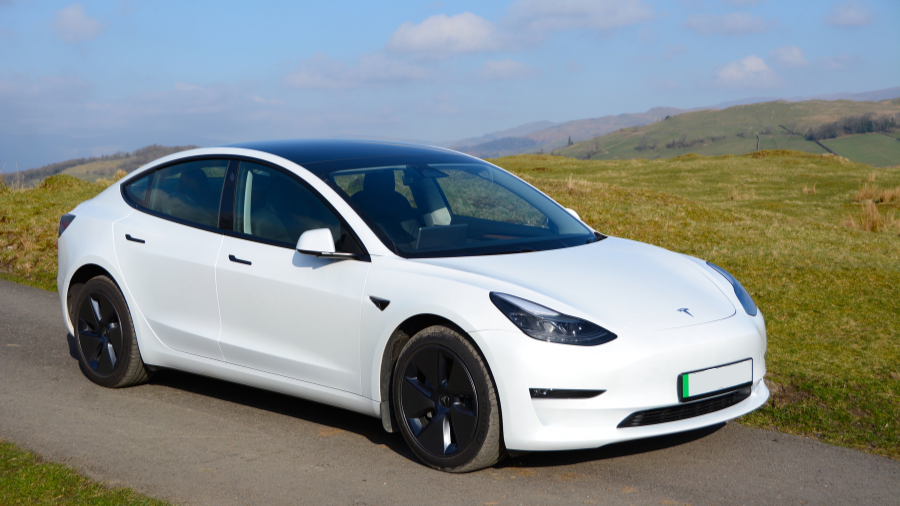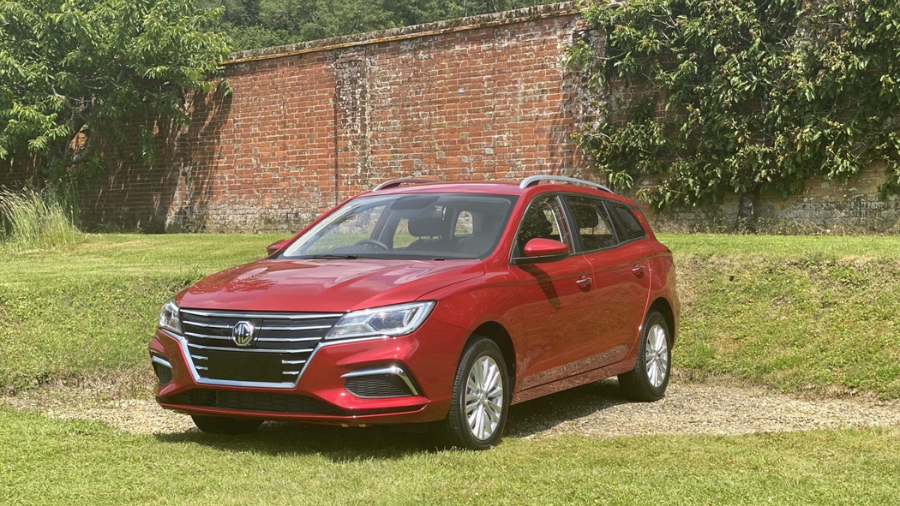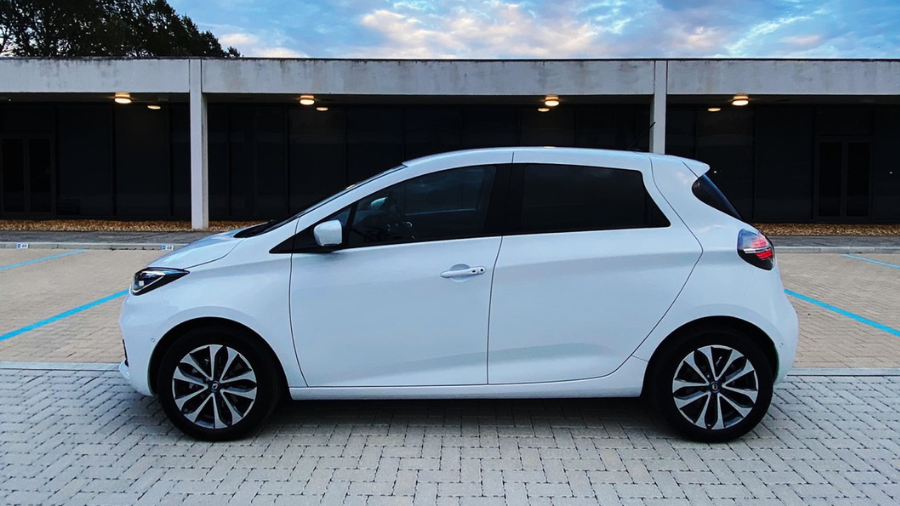Are you ready to go electric?
Want to know if an electric car is the right choice for you?
Join in with our simple online quiz to find out more.
The basics about electric car range
In this article we’ll explore what electric car range means, what the average range of an electric car is and how to calculate range. We’ll also explain what factors affect range and what to do if you run out of charge. Switching to an electric car can be daunting for some people because electric cars consume energy in a different way to traditional petrol or diesel cars, but its quite simple once you understand the basics.
Electric car range explained
When we talk about range for electric cars, what we’re really asking is: ‘How far can you drive with a full charge?’ So if you’ve got 100% charge, will your car travel 150 miles, 200 miles or more?
If you’re used to a petrol or diesel car, you might be used to thinking about range a bit differently, for example, how many miles you can travel with a full tank of fuel.
Typical electric car range
Most electric cars can travel between 100 to 400 miles on a full charge although new models with increasing range are coming onto the market all the time. The average range of an electric car is reportedly 260 miles. There are many factors which affect electric car range for example, driving style, outside temperature and weather etc, which we will cover later on.
Here is a short summary of some of the types of EV’s available and their electric car range, use it as an indicator, different models by manufacturer can have different electric car range dependant on battery size.
*Range listed is manufacturer listed range. Real-World miles may be lower dependant on a number of factors including driving style, weather and battery health for example.
| Range | Electric Car Models |
| 100-150 | You’re looking at a smallish car here. Something like a Nissan LEAF has a range of 143 miles, a Fiat 500e 160 miles or an electric Mini with 110 miles. |
| 150-200 | This category includes cars like an MG ZS and the Vauxhall Mokka, which both have a range of around 200 miles and Hyundai Kona of 190 miles plus. |
| 200-300 | These are considered long-range variants with a bigger battery for more miles. The Audi e-tron which has a range of over 300 miles, The Cupra Born – part of the Volkswagen Group has a range of over 260 miles or the Skoda ENYAQ estates smaller battery of 247 miles. |
| 300+ | These mile-munchers tend to be premium brands like BMW, Tesla and Mercedes, helping you cover long distances in comfort. |

How much electric car range do you need
Your first thought might be to buy the longest-range car you can but that’s not always the smartest choice. Long-range EVs need bigger batteries and often cost more. It’s worth asking yourself what sort of range you’ll use, considering your lifestyle, usage and needs. It’s well worth doing some sums before you decide.
In the UK, the average journey length in 2019 was just 8.4 miles, with drivers making an average of 18 trips a week. So if the average driver had a Nissan LEAF with a 145-mile range, that would cover their weekly driving from a single charge.
We recommend keeping track of how far you’re driving in a week and how often you’re parking somewhere you could charge, for example home, work or out and about. This will give you a better idea of your ideal range and combined with budget will help inform your choice.
| Range (Miles) | Journey type |
| 100-150 | This is ideal for a local runabout: popping to the shops and visiting friends and family locally. You’re not limited to local travel and you’ll have enough range for longer trips from time to time. |
| 150-200 | This might be a good choice for those who do short commutes to work or school runs every day. You won’t need to charge as often and you’ve got more options for longer trips. You’ve got a wide choice of cars including family hatchbacks and compact SUVs. |
| 200-300 | The perfect choice for most long-distance travellers who want to go electric. This sort of range makes longer distance and international journeys much more comfortable and practical. Some of these vehicles are much bigger in size than lower-range vehicles, which you might have to consider when it comes to parking. |
| 300+ | Are you happiest when you’re on a road trip? Then look at these big-battery options – but be prepared to spend a bit more for the privilege. |
Travelling far in an electric car
People regularly travel the length and breadth of the country in electric cars. They’re nicer to drive on longer trips because they’re much quieter without the engine noise of petrol or diesel cars and smoother to drive.
Just plan out how far you’re going, what your range is, and where you’re going to stop and charge. As more and more charging stations are built, it’s getting easier to top up when you need.
Some car specific apps let you enter a route and then suggest charging points. Some will even let you enter your specific car and then tell you where to stop based on your range and charge level.
Why do some drivers have electric car range anxiety?
Some drivers worry that they are going to run out of charge before they reach a charging point. The good news is it’s easy to cure. Almost everyone loses any range anxiety once they start driving an electric car regularly.
There are plenty of public chargers now, and you can find an up-to-date map here to help plan your journey. In-car range meters are also quite reliable and accurate, giving you lots of advanced warning about when you’ll need to re-charge. If you’re worried, you can even turn on an eco-mode to make the most of your remaining range. This clever mode reduces your car’s acceleration to help you reduce your power consumption. You can read more about charging here.

How is electric car range measured?
There are two ways of measuring electric car range. The first is Worldwide Harmonised Light Vehicle Test Procedure (WLTP), a standard laboratory test that’s most useful for comparing cars like-for-like. The second is Real-World range, a more realistic figure that accounts for factors that affect electric car range efficiency.
About WLTP
WLTP is a series of tests to measure a vehicle’s emissions and range is one of the factors. Every model of car is taken to a test centre and put on a rolling road – a computer-controlled set of rollers that can simulate different speeds and surfaces.
The laboratory is set to a temperature of 23°C and sensors are hooked up to measure the battery’s current and voltage.
The test includes “driving cycles” – simulations of four different types of driving, including stop-start city driving and open road driving up to 81mph. It also includes constant driving at 100km/hr until the car runs out of charge and slows down.
WLTP range is great of comparing two cars. So if car A has a 220-mile WLTP range and car B has a 240-mile range, you know you’ll get further in car B before you need to charge.
About ‘Real-World’ range
Real-world range means the distance you can drive on real roads on a full charge while you experience all the external factors which impact your electric driving efficiency. Calculating real-world range relies on the driver noting down electric driving performance trends over time.
- Establish your actual consumption in winter and in summer, ideally over a fairly long period of time using your typical route profile.
- Subtract another five percent from the advertised net capacity to allow for degradation of the battery.
- Divide the usable battery capacity by your winter or summer consumption.
The difference between ‘Real-World’ range and WLTP
Tests have found that real world range is on average about 15% less than WLTP range. That’s because real world driving has more variables than a test lab. Temperatures may be lower, which means batteries work less efficiently. You won’t have air con or heaters on during a WLTP test, which all use power. If you’re on the motorway you might travel faster for longer. Plus drivers in the real world try to avoid running their batteries flat like in a test.

6 Factors that affect electric car range
The debate about electric car range consumption is often related to the real-world range figures. In reality your driving style, the weather, how and where you charge as well as battery condition all affect how range efficient your car is. We’ve listed a bit more information below on electric car range factors for you to consider.
Electric car average speed and terrain
As a rule, the faster you drive, the lower your range. Why? It’s mostly down to air resistance. The faster you’re travelling, the more air your car has to force out of the way every second. This all uses energy, so increasing your speed reduced your overall and average range.
Driving up hills also uses more energy although EV’s have the added benefit of regenerative breaking which adds range when driving downhill.
Acceleration and braking
Heavy breaking will eat into your range. Every time you accelerate or brake sharply to slow down you’re reducing your range – either by using battery power to speed up or by losing speed from braking. Electric cars recover some of the power you’d normally waste from braking and use it to top up the battery. Regenerative braking makes a big difference: you can recover about 64% of the energy you’d lose without it.
Weather & season
Adverse weather conditions can make a big difference to electric car range for three reasons. First, batteries are less efficient when they’re cold. Second, cold air is more dense which means it takes more energy to drive in rain, wind and snow. And third, you’ll probably have the heaters on to keep you warm if you’re driving in winter – which uses battery power too.
Preconditioning is a fancy electric car feature that means you can heat or cool your car using power form the grid instead of your battery bumping up your range. You can read more about How do seasons and temperatures affect range?
Vehicle weight
More load means less range, which is why car manufacturers try their hardest to keep vehicles as light as possible. More people in the car or a boot full of luggage will eat into your overall range.
Using the air conditioning and heating
Heating and cooling both eat into your range as they use the battery to heat or cool the air. Adjusting your settings so they aren’t working as hard can make a difference if you’re trying to up your mileage.
Battery condition
The biggest factor that determines the range of an EV is the capacity of the lithium-ion battery in the car. This refers to the amount of electricity that can be stored in it, but the energy density of the batteries is also important. The capacity of a battery slowly decreases over time due to wear and tear caused by charging cycles. Most drivers only charge 80-90% most of the time to keep their batteries healthy – so your day-to-day range might be a bit lower.

Electric car range and efficiency
Helpful tips to increase your electric car range
Hypermiling (or eco-driving) means driving as efficiently as possible to coax the maximum range from your vehicle.
Some people take it seriously – and results can be staggering. The team at armed-forces charity Mission Motorsport managed to set a record-breaking 9.14 miles per kWh in a Renault Zoe E-tech which was completely unmodified (apart from fitting faster-rolling tyres). That was 475 miles from a car rated for 230!
While most of us aren’t going to enter range-busting marathons, there are some tips we can all follow to make a difference:
- Drive smoothly – accelerating gently is far more efficient that launching yourself from the traffic lights every time.
- Drive slower – you’ll see big gains in range by travelling at 60mph or less. Faster than this and more drag means less range.
- Use regenerative braking – if you’re slowing down, try to stay off the brake pedal and let the regenerative braking do its thing,
- Turn down climate controls – heating and cooling both use energy, so turning them down or using heated seats instead will give you more range.
- Check your tyres – under-inflated tyres will sap your range, so check your pressures regularly.
The most common measurement is miles per kWh. To work it out, divide your car’s range in miles by its battery capacity in kWh.
How do you measure the efficiency your EV?
For electric cars, efficiency is typically measured in miles per kilowatt-hour. Miles per kilowatt-hour simply means the miles an EV travels on a kilowatt-hour of energy stored in the battery. Anything above 4 miles per kilowatt-hour is regarded as good. Most electric cars typically see efficiency figures of between 2.5 and 3.5 when driving on the motorway.
You might see some other measurements. ‘Watt-hours/Wh per mile’ pop up sometimes: you can just divide the number by 1,000 to get miles per kWh. You might also see ‘mpg equivalent’, which helps petrol and diesel drivers to compare their car’s efficiency against EVs – but it’s a lot less useful than getting to grips with miles per kWh.
What if I run out of charge?
Most drivers soon work out when to charge up – just like petrol drivers knowing when they need to fill up the tank. Modern electric cars have very accurate range meters and they’ll give you plenty of warning if you’re running low. And most cars have a reserve low-power mode that’ll give you a few more miles to get to the nearest charger.
If the worst does happen, though, just get yourself somewhere safe and call for recovery. Most of the time you’ll get a flatbed truck that can take you – and your car – to the nearest charger.
Sometimes breakdown trucks carry battery-powered emergency chargers. Think of them as the electric equivalent of a petrol can: they’re big battery packs that can give you up to 10 miles of range to get you to a mains-powered charger.
If you want to know more about electric car charging, read our comprehensive guide at The Ultimate Guide To Electric Car Charging.
Are you ready to switch to electric?
The electric car range available is diverse and increasing all the time. Understanding the electric car range is a vital step for you to decide which electric car model is right for you. If you are ready to move to electric cars, start browse our special electric car deals now.
If you are looking for a cost-effective way to go electric, leasing an electric car with ElectriX is the top choice for you.
Is an electric car
right for me?
Discover electric cars that are available through our partner CBVC today.
Discover cars available